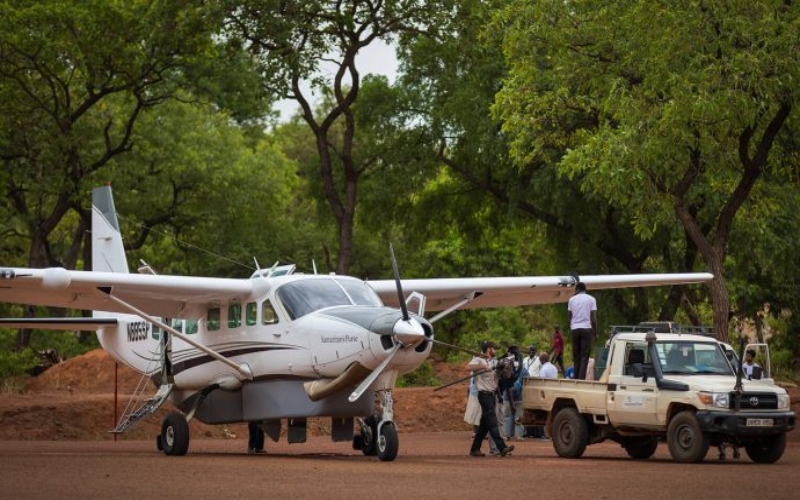From film to digital era: How photography in Nairobi has evolved over the decades

World Photography Day, observed every August 19, celebrates the art, science, and history of photography by commemorating the 1839 release of the Daguerreotype, the world’s first practical photographic process.
Almost a decade ago, I lost one of my uncles to a long illness believed to have been related to a persistent cough. What struck me most was that in his more than 50 years on earth, he had never taken a single photograph. His obituary ended up carrying the image of a rose instead.
It may sound unusual, but to me that rose was a reminder of him—and also of the fact that he went through life without leaving behind even one photograph. His passing, and the absence of an image to remember him by, left me deeply saddened. Still, when I looked back at how photography has evolved over the years, I understood why. In rural areas from the early 1970s onward, taking photographs was neither common nor accessible. It seemed like a privilege reserved for a few.
More To Read
- Rights experts sound alarm on AI’s potential to target activists, undermine electoral integrity
- UN calls for legal safeguards for AI in healthcare
- How AI is reshaping education across Africa
- Kenya leads Africa in AI adoption and data privacy - report
- Creativity is good for the brain and might even slow down its ageing - study
- Grammarly rebrands as Superhuman in major AI productivity shift
This World Photography Day, I decided to walk through the streets of Nairobi in search of the legendary photo studios that once helped preserve people’s memories. To my disappointment, most of the Kodak studios—once household names—had closed. The few that remain have shifted into the digital age.
Along Aga Khan Walk in Nairobi’s Central Business District, I came across Maridadi Pix, a famous photography enterprise from the 1960s. It had shut its doors at Uchumi House, citing high operating costs. Although still in business, it has since moved to a much smaller space within the city.
 A studio portrait of a man with his family taken in Nairobi in the 1960s. (Photo: Barack Oduor)
A studio portrait of a man with his family taken in Nairobi in the 1960s. (Photo: Barack Oduor)
Digital photographer
On the streets, I met Bruce Anderson, a young digital photographer waiting for clients. He was optimistic, saying that technology has made his work far easier than it was in the past.
"I take photographs and instantly send them to clients. The digital era has made it very easy for us. There are no stories of coming back for your photos the next day," said Anderson.
He credited the internet and tools like artificial intelligence with reshaping the art.
"Today, it's the client who chooses how they want their photos to appear. They decide the colour, venue and sometimes even the clothing. These are things that I believe weren't there in the past," said Anderson.
In his workspace, Anderson used advanced gadgets such as speed lights and modern headlights—tools that were unheard of in earlier days. He added that it is almost unthinkable for anyone today not to have an image of themselves.
His views were echoed by fellow photographer Ken Njoroge, who said technology has revolutionised the entire field.
More powerful cameras
"Even the cameras we're using now are more powerful. They're no longer producing black and white images. They're fast and can perform many tasks at ago," said Njoroge.
Anderson and Njoroge are part of a growing group of young photographers making a living—and pursuing their passion—on Nairobi’s streets. Many are college students on holiday or recent graduates exploring their love for the art.
World Photography Day, marked every August 19, celebrates the art, science, and history of photography. It commemorates the 1839 public release of the Daguerreotype—the world’s first practical photographic process.
In Nairobi, the story of photography stretches back almost a century.
Early days
Bachu Patel, 80, the son of Manibhai B. Patel—the founder of Vanguard Studios, established in 1938 along Government Road (now Kimathi Street), remembers the early days vividly.
"In those days, we used all kinds of films—from roll films to sheet films," Patel recalls. "The biggest size was six by eight inches. Those cameras were huge, heavy wooden bodies, bellows you had to extend, and no automatic focus. You had to be very precise and very patient."
Back then, photography was more than just snapping a picture—it was craftsmanship.
"Lighting had to be set by hand. Film was developed in darkrooms with carefully measured chemicals. Every mistake was costly. You didn't waste a shot," Patel told journalists.
Over time, film gave way to digital. By the 2000s, the transition was already clear.
As Patel notes, young photographers today no longer need darkrooms—just a memory card and a laptop.
Top Stories Today











































